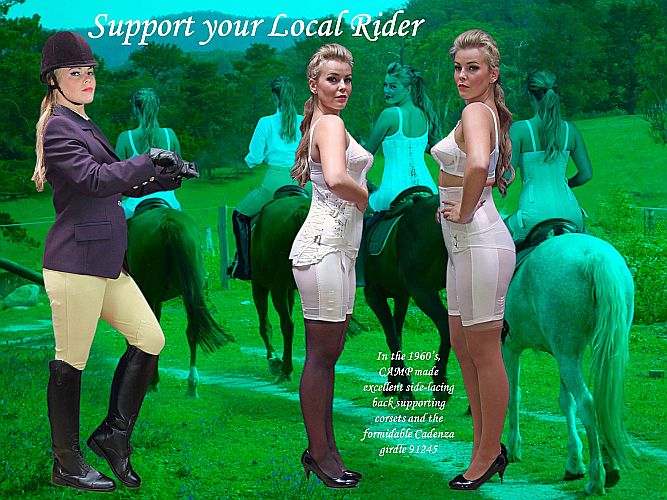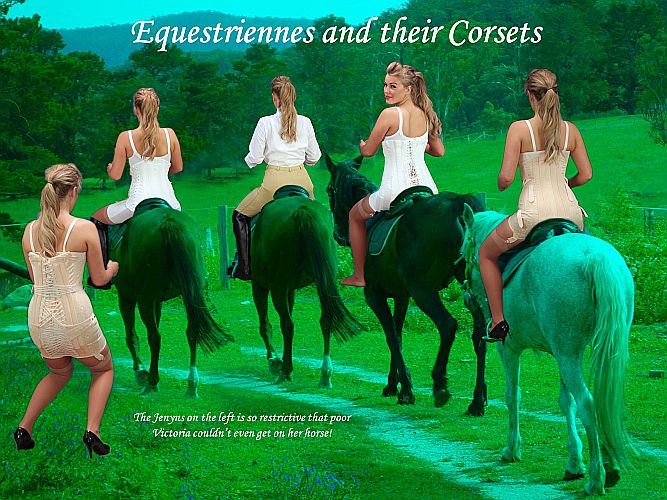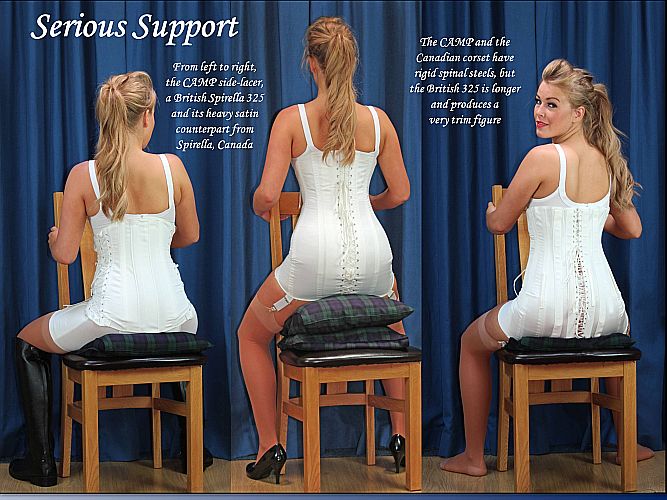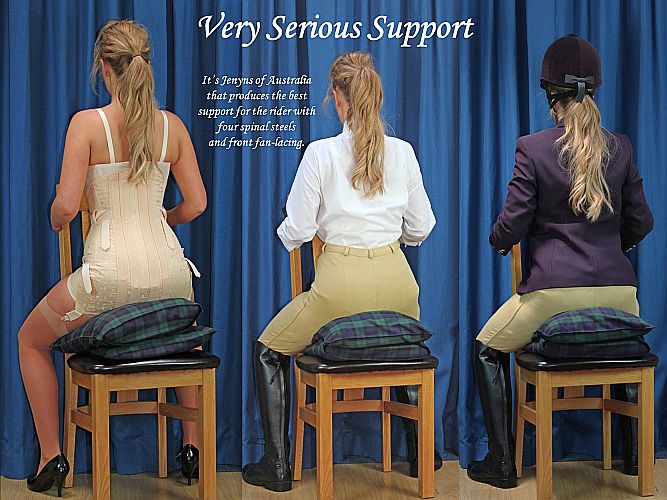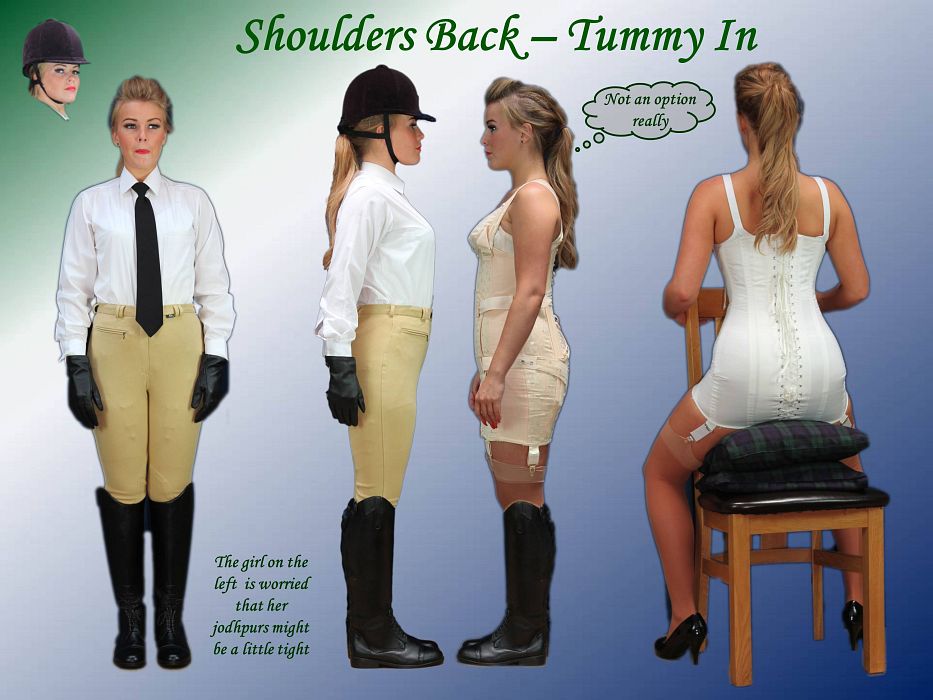

|
|
The Equestrienne's Support There are many activities that can take a toll on a wearer's back and horse riding is one of them. Even the act of horse riding can put a strain on the back without even having to fall off the animal. Indeed, a good support can have the double benefit of protecting the back and improving one's posture. If your back is already weak, a firm corset can make all the difference between a pleasant hack in the country and a painfully disagreeable experience often followed by a day recovering in bed. We have used our model Victoria to demonstrate some of the supports available, however, be warned, the rigid spinal steels and even the colour of the corset itself will reveal your secret to anybody with a keen pair of eyes. (Victoria wears a Jenyns lumbo-sacral support - right). The classic white shirt worn by the equestrienne is not the camouflage that you might imagine. The following account illustrates this point:
But let us return to the classic equestrienne, immaculate in her jodhpurs, boots, white shirt and tie and helmet. It is one of those uniforms that smacks of discipline and strong will. Indeed, some females of this breed can be quite haughty (it is often a problem with people in uniform). I know of women who normally will smile and thank you for driving slowly past their horses, but put them in a uniform and an arrogant sneer is about as much as you will get. Only recently, I encountered a hunt with two women galloping down the road. I stopped the car completely since one of the horses appeared to be a little 'lively' and was rewarded by nothing more than a haughty gaze. Ironically, I could see just behind their horses a large fox regarding this with (I swear) a smile on its face. |
|
|
Here are four of the supports that Victoria gamely tried on that summer's afternoon.
|
|
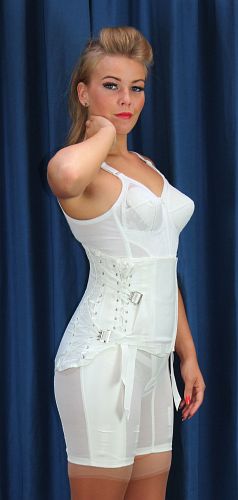
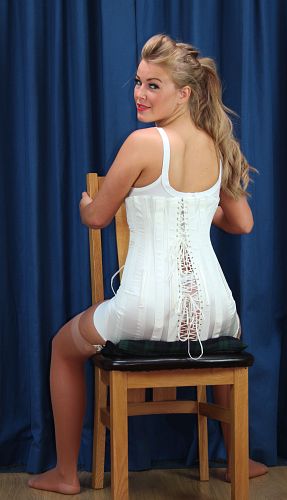
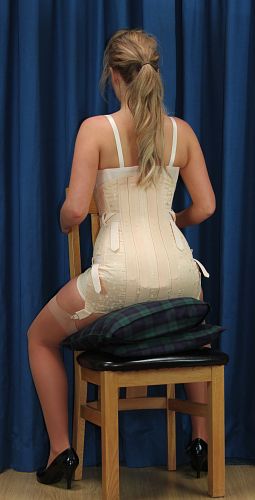
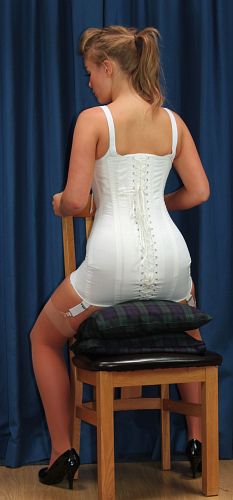
On the left is a Camp 9974. The four sets of lacing seem something of an overkill until you realise that this support was designed for maternity wear; the two forward sets of lacers for periodic adjustment and the side fan-lacers to tighten the garment. A quirk of Camp measurements is that their conventional girdles and corsets were sized by the waist, whereas, the back supports were sized by the hips. Victoria wears a size 34 here that perfectly fits her 27 inch waist. Next is a Canadian Spencer. It is obvious that the corset has been cut with a scanter hip-spring than Victoria would like. We strongly suspect that this was an elderly woman's corset since women tend to lose the flesh over the buttocks in later life. The woman certainly had a bad back since this corset has four rigid spinal steels and is one of the heaviest corsets in our collection weighing in at 800 grams (nearly two pounds). The Jenyns dorsal-lumbar support also has four rigid spinal steels and is a far better fit on our model and certainly shows off the curve of her back; indeed, she had little option. On the right is a trusty British Spirella 325 (the front and back-lacing model version of the 305). Again, it fits Victoria very well and puts an admirable waist upon her. It is far lighter than the previous two corsets but would fail to protect the back since, although it is well boned, there are no rigid steels. One of the firmest corsets that Victoria tried was the pink creation below. This is a very serious corset and the absence of any maker's name suggests a made-to-measure item probably from Germany. The only way to enter the corset is to loosen the laces and step in. The lacing that caused Victoria some trouble (below left) is then tightened and six very wide and long pre-formed rigid steels then grip the wearer at the back, sides and front rendering the lower spine quite immobile.
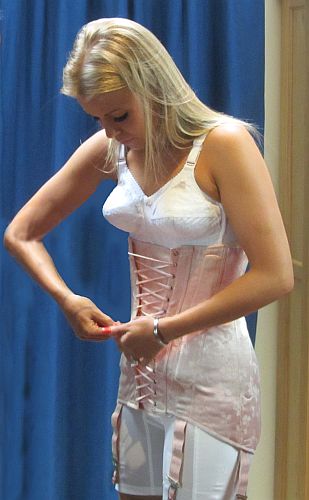
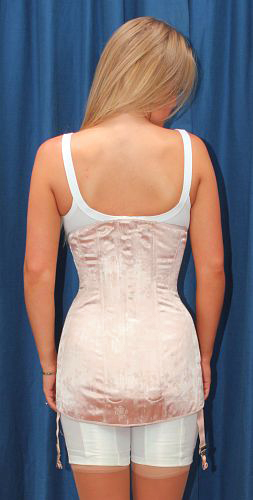
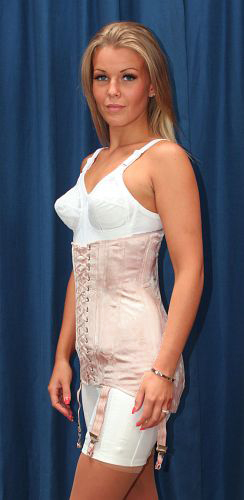
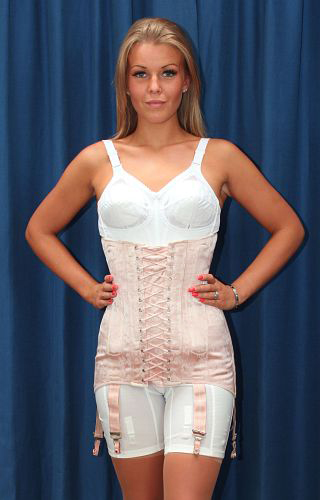
Having tried on all the corsets, we placed Victoria into her dream world. Note that the all-enveloping Jenyns is so restrictive that our model could not even begin to sit down.
